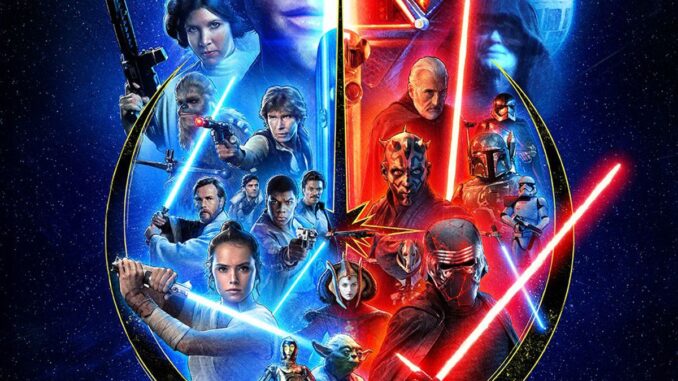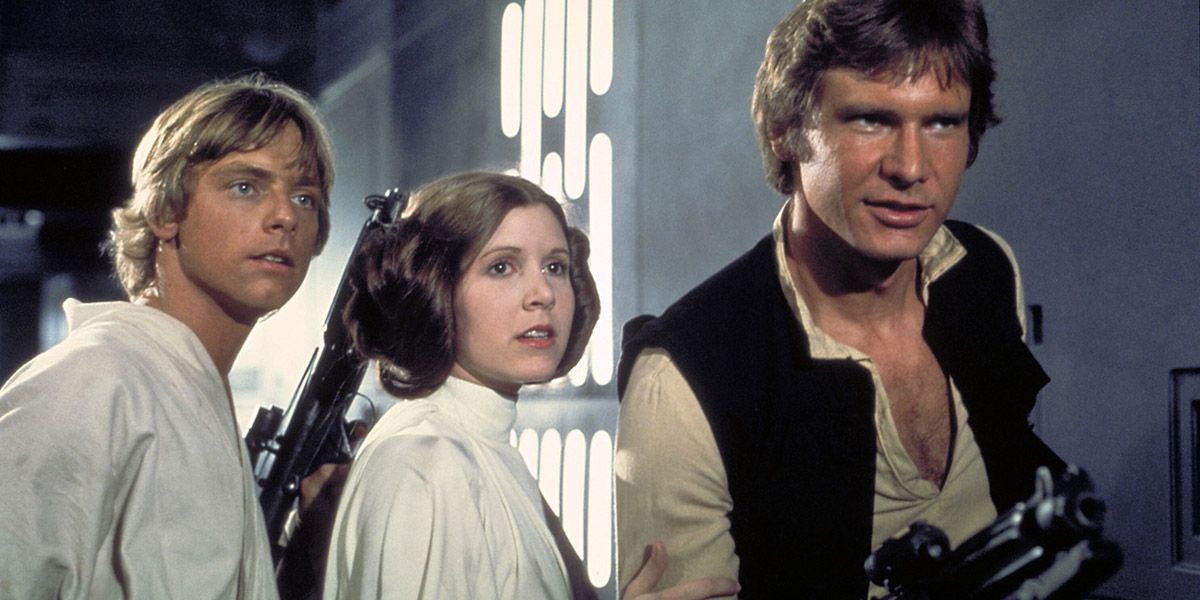
Why George Lucas Really Began Star Wars With Episode 4
The original Star Wars is famously the fourth chapter in the epic saga. But why wasn’t it considered Episode I, considering it was released first?
Thanks to the decades of lore that have crafted Star Wars, even the smallest details are given an explanation of how they connect larger events in the galaxy. However, at the end of the day, there are more questions than ever about why, and how, certain events unfolded the way they did. One of the biggest questions fans have had is why 1977’s Star Wars was called Episode IV, despite being the first film in what would become a blockbuster franchise.

The logical explanation for why Star Wars starts with Episode IV is that the prequel trilogy was (naturally) set before the original; hence, the numbering. However, the reason behind the numerical choice is far more layered than that. According to Looper, Michael Kaminski’s 2008 book The Secret History of Star Wars attributed the unique numbering to “technical and storytelling reasons.” However, a more expansive understanding of A New Hope’s placement revealed that George Lucas had multiple big ideas, and only a particular way he could get them to audiences.
Updated December 22, 2023 by Robert Vaux: The article has been updated with additional information about Lucas’s writing process while creating A New Hope in the 1970s. It also addresses the logistical difficulties involved in the prequel trilogy, which explains the time gap between the conclusion of the original trilogy in 1983 and the release of Star Wars: Episode I — The Phantom Menace in 1999.
The original Star Wars was a surprise hit, both for moviegoers and for Lucas, who was convinced the film would flop. But Episode IV, later subtitled A New Hope introduced a sprawling setting filled with narrative holes for world-building. For example, terms fans have taken for granted now, like the Clone Wars and Jedi Council, were name-dropped in A New Hope without any context. As a result, the film’s world felt more lived-in, but it also left fans feeling they may have missed something.
Dropping audiences into this galaxy was a huge risk that wouldn’t begin to pay off until 1999. More Star Wars movies were always part of Lucas’ vision. He conceived of the project partly as an homage to the Flash Gordon and Buck Rogers serials of the 1930s, which broke their stories down into multiple chapters presented weekly as a means of attracting audiences into theaters. Lucas wanted to capture the swashbuckling feel and sense of the epic that they carried, without the threadbare budgets and shoddy special effects that came with them. Indeed, he originally intended to direct a straight-up adaptation of Flash Gordon, only to learn that producer Dino Di Laurentiis held the rights to the characters. Undeterred, he decided to create his own version, adopting the multi-chapter format of the 30s serials into the narrative. (Di Laurentiis eventually produced a campy and outlandish adaptation of Flash Gordon in 1980.)
But there was a problem. As revealed in the documentary Empire of Dreams, his script was far too long to condense into a single film. And his first movie, THX-1138, was a commercial failure, leaving studios reluctant to give him the kind of money he needed for such an ambitious project. So he focused on just one chapter: rearranging certain elements and delivering a stand-alone story that could be told in a two-hour running time. The remainder of the story had to wait until the first film succeeded, which was far from a given. Among other things, it explains why Return of the Jedi involves a second Death Star: Lucas originally intended the superweapon to appear at the end of Episode VI, but moved it to Episode IV in the event he couldn’t make any additional movies. It also explains why the script contains then-cryptic references to events such as The Clone Wars. It gives his galaxy a sense of history — which contributes to the plausibility of the film’s universe — but serves no role in the plot.
Lucas originally planned for a six-part epic that would chronicle the fall of the Jedi Council and the hard-fought Clone Wars. Its conclusion would have been the plot of A New Hope, as it would be revealed that the 1977 epic was merely an epilogue. However, as history has shown, this didn’t go according to plan once Star Wars Episode I: The Phantom Menace hit theaters. In fact, what ended up being the prequels were also a part of the four drafts Lucas had written for Star Wars in the hope that he would be able to craft the perfect singular story. As he recounts in Empire of Dreams, Lucas gave up a considerable amount of financial compensation — which he was entitled to after the huge success of his 1973 film American Graffiti — in exchange for retaining the creative rights to the property. This decision would allow him to return to the outline and finish the story the way he wanted, using the other chapters he had developed in his early drafts.
None of this information was known to the public when A New Hope was first released. The film was simply called “Star Wars,” and many fans continued to refer to it as such for decades after its release. And its famous opening crawl lacked the “Episode IV” title that was added later. Indeed, the crawl itself was intended to get viewers up to speed on the story quickly without having to explain the background of the Clone Wars that later became the bulk of the prequel. The original trilogy became Episodes IV, V and VI, and while Lucas let it be known that they were the middle section of a nine-part saga, he didn’t appear to be in any hurry to tackle the remaining films. As explained in The Secret History of Star Wars, the process of making both A New Hope and The Empire Strikes Back proved arduous enough that Lucas didn’t feel it feasible to tackle the prequels. Furthermore, he had cannibalized many of the ideas from the earlier chapters to complete the core trilogy, and they would need to be replaced for the prequel trilogy to work. Most importantly, the cost to realize his vision for the Clone Wars would be considerable, leading Lucas to shelve them in favor of new projects. Fans were left to wonder what Episodes I-III would be like for the better part of 15 years.
The advent of CGI changed Lucas’ thinking and allowed him to create the epic scope of the Clone Wars on the scale he had always imagined. They were preceded by the “special edition” of the original trilogy, updated with new special effects and a number of slight changes to the story. The adjustments remain controversial among Star Wars fans — notably the change to Han Solo’s confrontation with Greedo, leading to the catch phrase “Han Shot First” — but they were still a big hit at the box office, and paved the way for the successful prequel trilogy to come. What may not have sat well with fans in the past made the most sense only to Lucas, as he had crafted this detailed epic decades earlier. With the dust finally settled, it’s even more clear what the initial vision was going to be and how it had enhanced and redefined what fans who grew up during the original films thought and felt.
The original Star Wars was a runaway hit that took a narrative gamble, as it dropped its viewers into a futuristic world with little context or backstory. However, the hero’s journey and the characters that inhabit the world more than made up for the missing bits of information. As a result, it became the perfect backdoor opportunity for Lucas to continue his vision and tell more of his story with events that predated the original trilogy. In the end, making the first film. Episode IV, was symbolic of the opportunity Lucas needed to give fans even more stories that could potentially evolve beyond even that. A New Hope was made in a different world, when Lucas didn’t have the same resources at his disposal, and needed to get a single good movie on screens to get the ball rolling. Its status in the middle of the story was necessary to make that happen.
